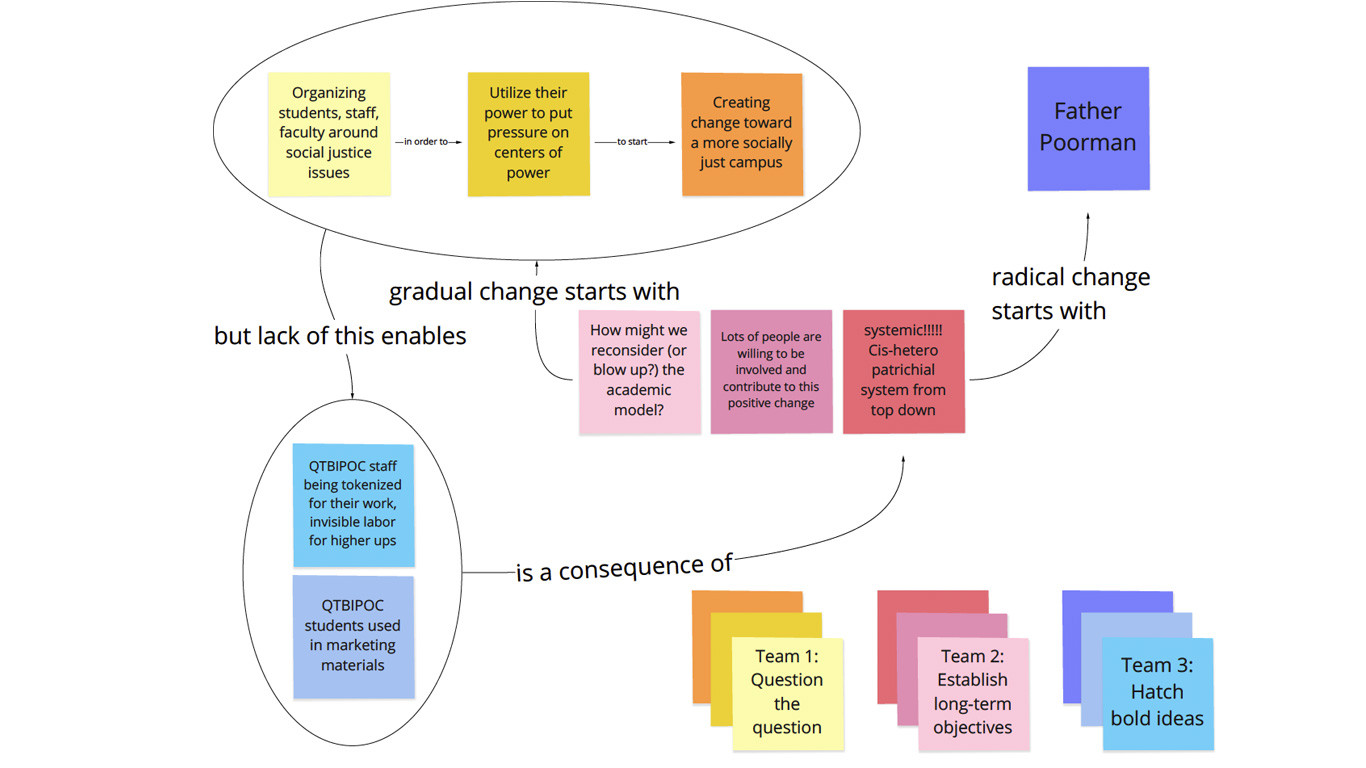“When someone discriminates against a person in a racial group, they are carrying out a policy or taking advantage of the lack of a protective policy. We all have the power to discriminate.”
“What choice will we make? What world will we create? What will we be? There are only two choices: racist or anti-racist.“
– Ibram X. Kendi, How to Be an Antiracist.
Wicked problems are problems whose solution requires a great number of people to change their mindsets and behavior. A striking quote from the comedian and actor D.L. Hughley paints a vivid picture of America, “… America is aspirational. … Obama is what we would like to be. Donald Trump and his supporters are what we are.” (source) On January 20, 2017 Donald Trump was inaugurated as the 45th president of the United States. On May 25, 2020, the death of George Floyd pushed a nation into action towards social justice.
Race is a construct of power and oppression. It is one of the defining features of being an American. It is so definitive we must purposefully strive to be antiracist, as the system of racism is insidiously engrained into each and every American citizen. Racism and other forms of oppression start at home and propagate throughout education. We are not born racist, sexist, or with any other form of discrimination. However, we are all born with ability to make choices and the willingness to make and transform the natural and artificial world that surrounds us.
The fall 2020 semester was fully remote and 100% online for the Innovation Minor. This presented a teaching and learning challenge in the face of so many wicked problems directly impacting the definition of reality. INV300 fa20 – Empathy, Observational Research, and Human-Centered Design took on the topic of social justice to develop the empathetic mindset and the continuation of exploring how to implement human-centered design methods as the core practice of innovation. This direction was driven by the commitment to abolishing white supremacy in design education by Salvador Orara, Innovation Professor of Practice, and the presiding instructor for all of the courses within the Innovation Minor.
Teaching design and innovation within the space of social justice at a private Catholic institution of higher education is no easy task. There are no UP-specific templates or frameworks for facilitating discussions at the intersection of race, religion, and innovation. In the face of social unrest there was no sense in designing assignments for developing empathy around trivial topics. The low hanging fruit we find today is due to their overwhelming weight of systemic impact and most often, because designers do not work in these wicked areas as often as they should.
This project seeks to foster a community of teaching and learning towards the creation of antiracist worlds, so that graduates of the University of Portland go on to be mindful innovators for the sake of basic human needs and rights; before the consideration of capitalism, entrepreneurialism, or business.
Innovation is the practice of challenging the status quo to include and serve those in need.
Project Setup
The class of students were broken up into three teams and each team had their own research objective under the larger umbrella of “What is Social Justice at UP?” Each team was assigned a Team Leader to act as a liaison between the recruited participants and to ensure the team was on track for their deliverables.
- Team 1: Question the Question: What is Social Justice at UP?
- Team 2: Establishing long term goals: Diversity, Equity, and Inclusion
- Team 3: Hatching Bold Ideas for Social Justice at UP
The methods for each session were guided by recipes from the LUMA Institute. Students had to construct their own scripts to conduct a session within a 1-hour and 15-minute time block. In addition, students had to be creative in using various online tools to facilitate each method to achieve the desired outcome. The image below outlines the timeline for the project. It should be noted that class was cancelled on Thursday, November 26, which was an oversight in planning that led to pushing the due date to December 3rd.
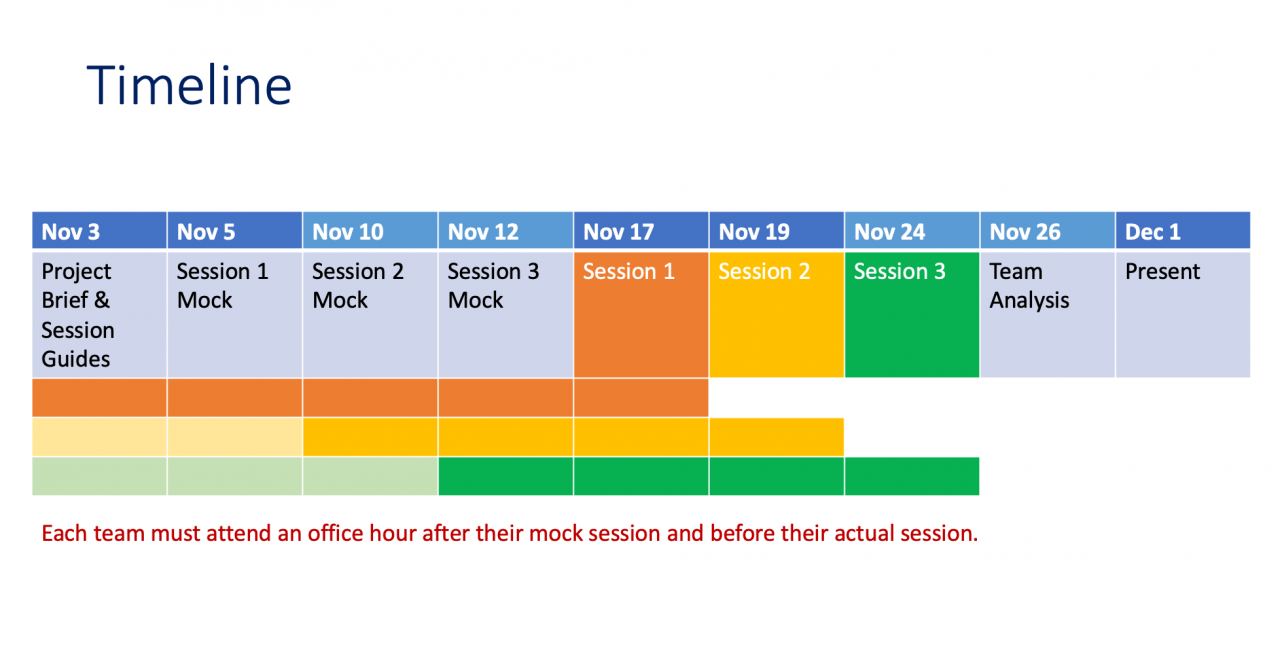
Project Learning Outcomes
- Demonstrate your ability to work as a team to uncover qualitative insights into a wicked problem and empathize with a community.
- Communicate with stakeholders and leadership of an organization to push them to examine policies.
Course Learning Outcomes
- Apply the mindset, skillset, and toolsets associated with design, creativity, and innovation in contexts of their academic and professional interest
- Develop techniques for building empathy and the ability to design for human interaction including user observation and participant interview techniques
- Demonstrate simple sketching and prototyping skills for visualizing and communicating ideas in 2D and 3D forms
- Demonstrate creative problem-solving within cross-disciplinary, team based environments
- Expand their abilities and build expertise in persuasive communication through storytelling, presentation, and other communication techniques
- Demonstrate ability to integrate, communicate, and collaborate successfully on project-based work for a local business and/or organization
Resources
- 10 Characteristics of a Wicked Problem by Horst W.J. Rittel and Melvin M. Webber
Professors of design and urban planning at the University of California at Berkeley, first coined the term ”wicked problem” in “Dilemmas in a General Theory of Planning” (1973). - The following articles from upbeacon.com:
- https://www.upbeacon.com/article/2020/07/administrator-goes-public-with-concerns-about-racism-and-sexism-within-up-administration
- https://www.upbeacon.com/article/2020/07/up-faculty-and-staff-petition-for-transparency-in-outside-investigation
- https://www.upbeacon.com/article/2020/09/pilots-on-the-front-line-seeking-change
- https://www.upbeacon.com/article/2020/10/black-student-union-speaks-out-about-being-black-on-the-bluff-in-new-podcast
- https://www.upbeacon.com/article/2020/04/ethnic-studies-faculty-search
- https://www.upbeacon.com/article/2020/09/opinion-dont-do-anything-now-you-might-regret-later
- https://www.upbeacon.com/article/2020/09/opinion-the-fight-is-not-slow-it-is-long
Deliverables
Each of the three separate teams had to complete the following:
- Recruit and obtain consent forms from Faculty, Staff, and Students
- A written session script & MIRO board (or any other digital tools)
- Conduct a pilot session with fellow classmates as stand-in participants
- Conduct the actual session with recruited participants
- An analysis and synthesis report providing immediate action for UP Leadership
Each team synthesized their findings and merged their outcomes into a collaborative recorded presentation. Students chose the method of Concept Mapping to present the intricate details and high level relationships of the problem space. This presentation was delivered to the Assistant Provost for International Education, Diversity and Inclusion who is also acting Chair of the Presidential Advisory Committee on Inclusion (PACOI). It should also be noted that Salvador Orara is also a contributing member on PACOI.
The following images are screenshots from the student presentation. In some areas of the presentation, the student researchers present direct evidence from their respective sessions. The analysis and synthesis is the activity of connecting all of the evidence to forge a picture from a small set of Faculty, Staff, and Students at UP. In many ways this is a small mirror for UP Leadership.
According to the anonymized records, each session had at least one participant that identified as a member of the QTBIPOC community at the University of Portland. Each student research team had at least one person who identifies as white. Each Team Leader identified as she/her pronouns, where two of the three team leaders identified as BIPOC.
Opening Statement
We believe that creating a collective effort of students, staff, and faculty around social justice, rather than individual initiatives, will result in a more socially just campus. We will know we are right when we see the collective utilizing their power to put pressure on centers of power. But, this could be harmful for members of UP, if the collective does not address the community’s needs or if it loses momentum and diminishes.
Students of the Innovation Minor, Cohort ’21
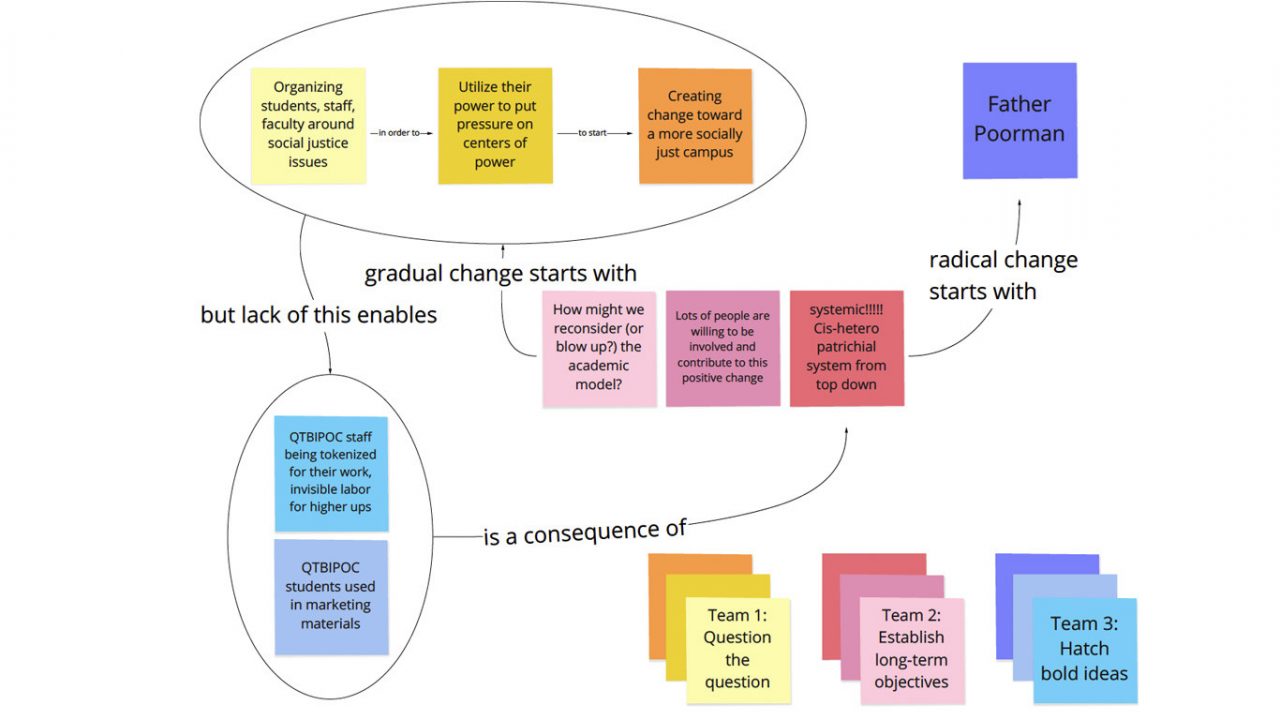
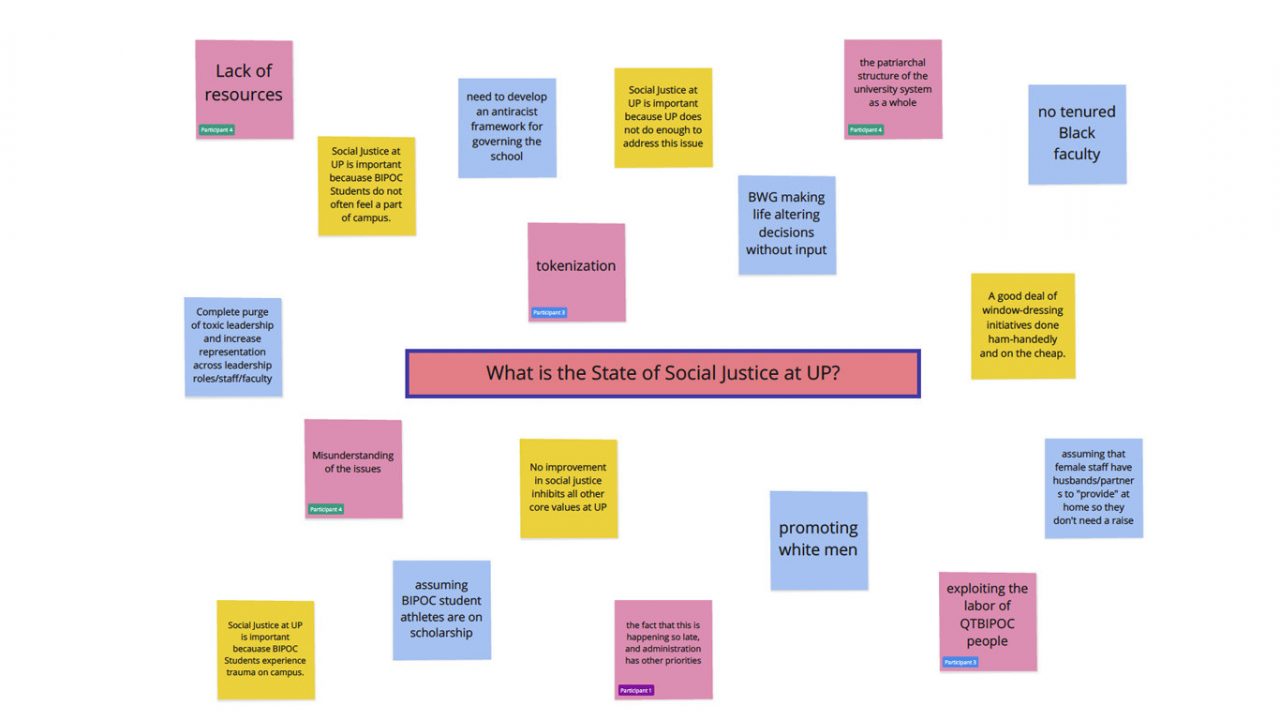
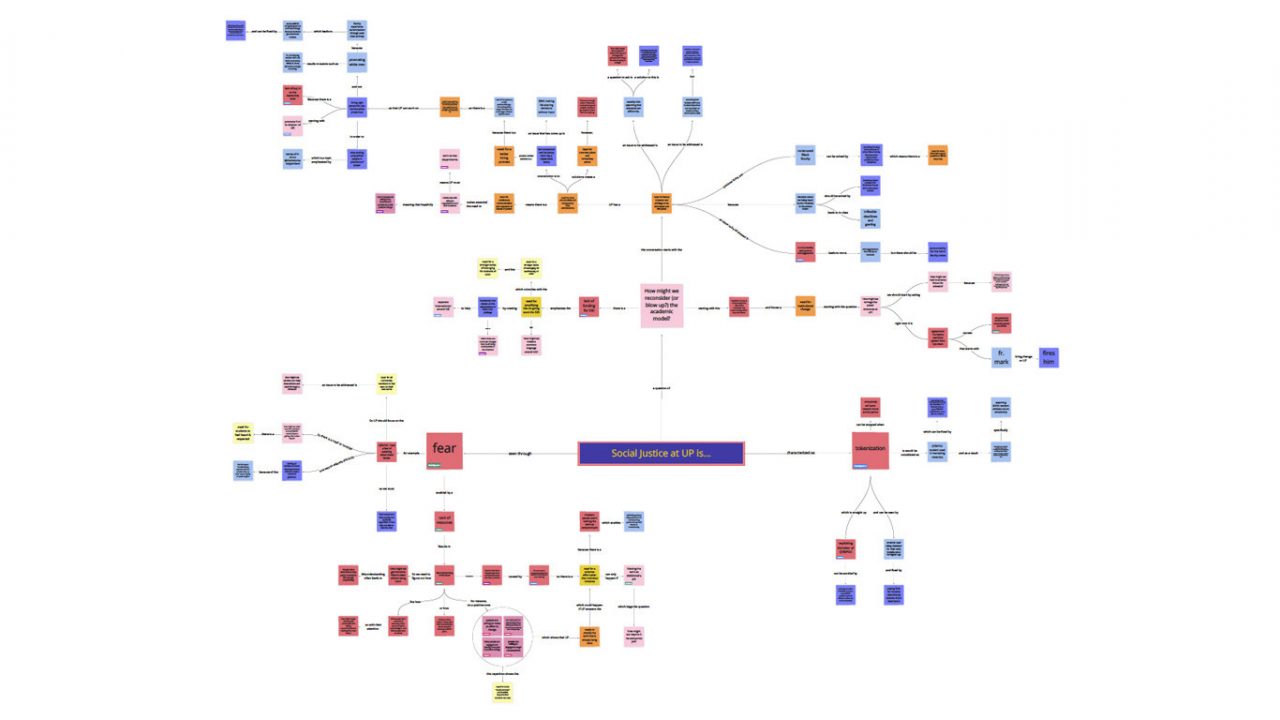
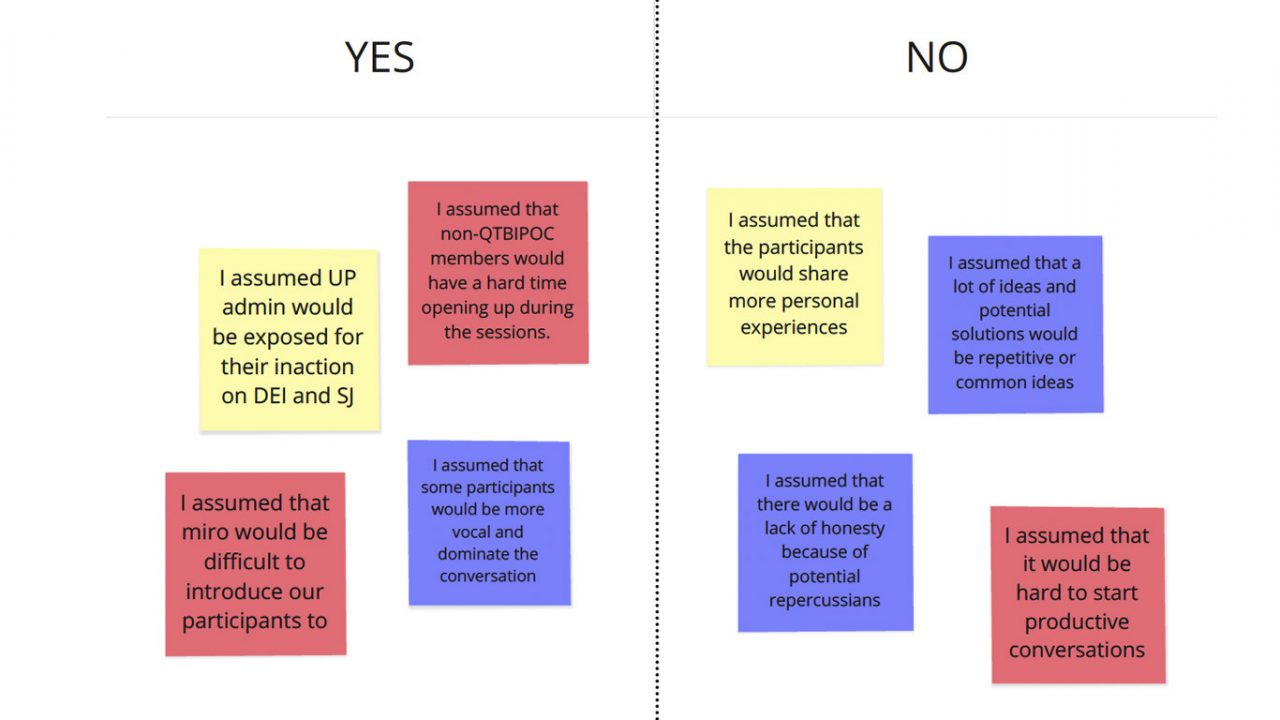
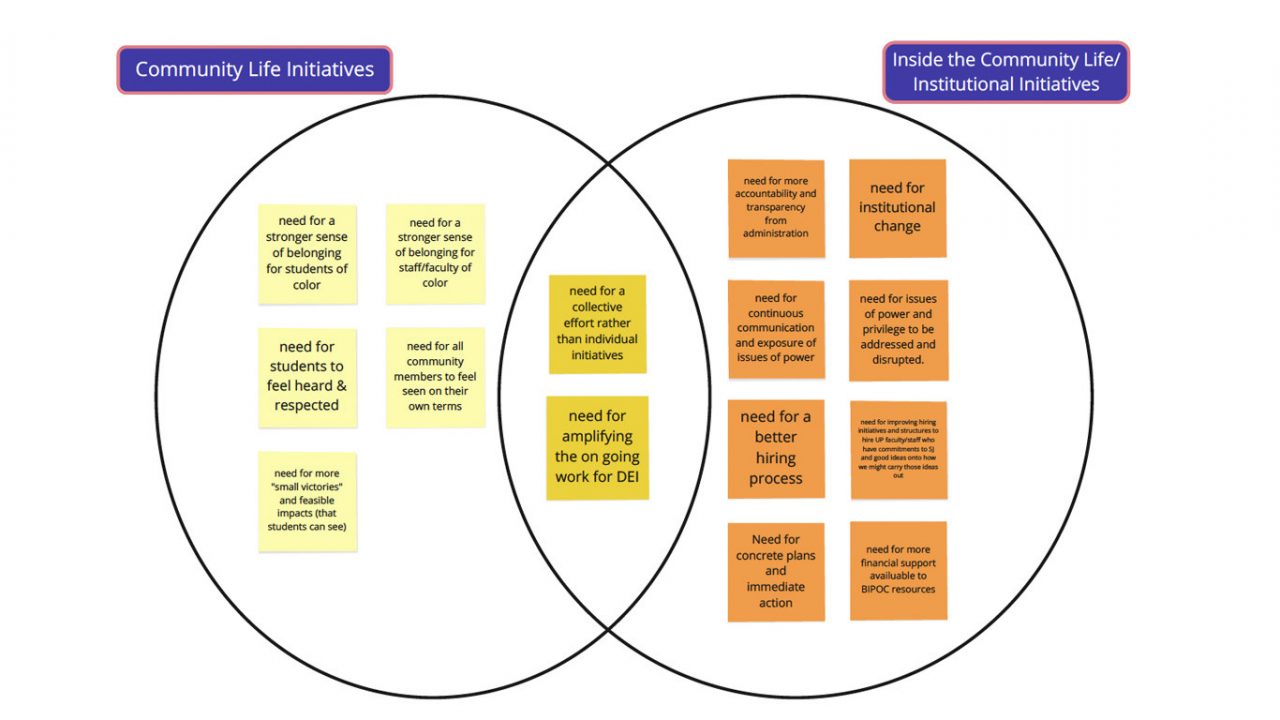
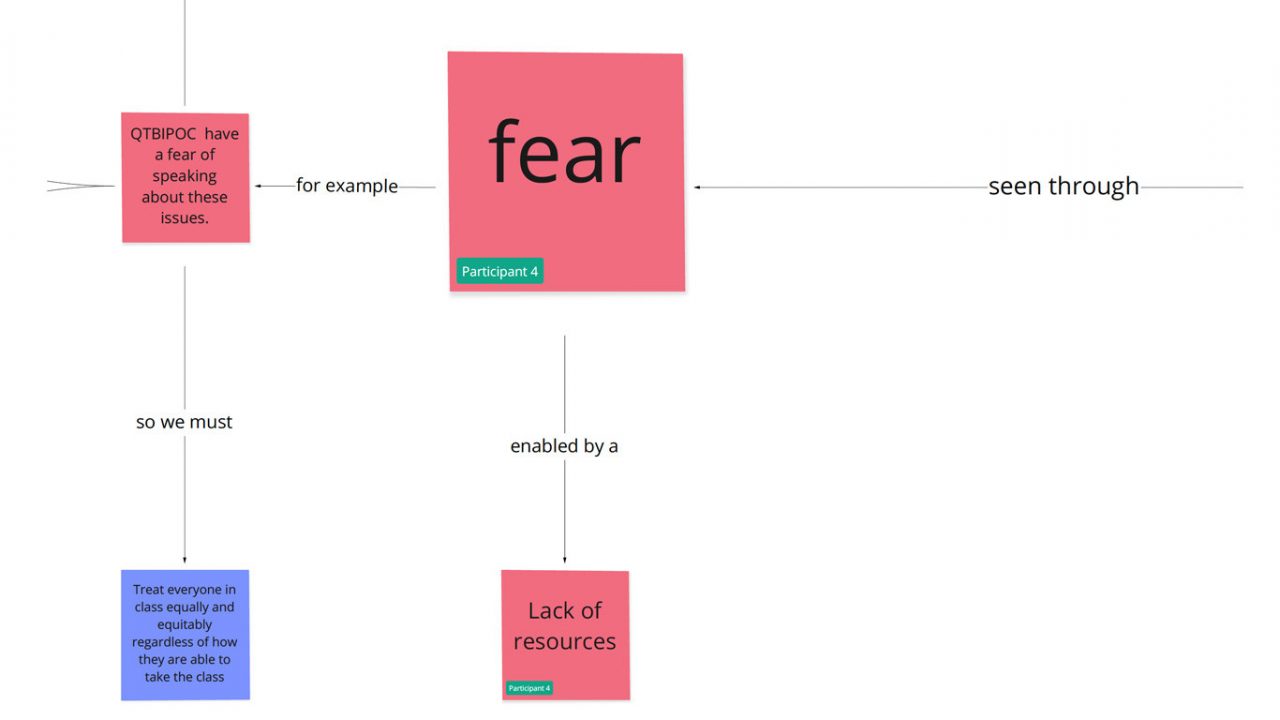
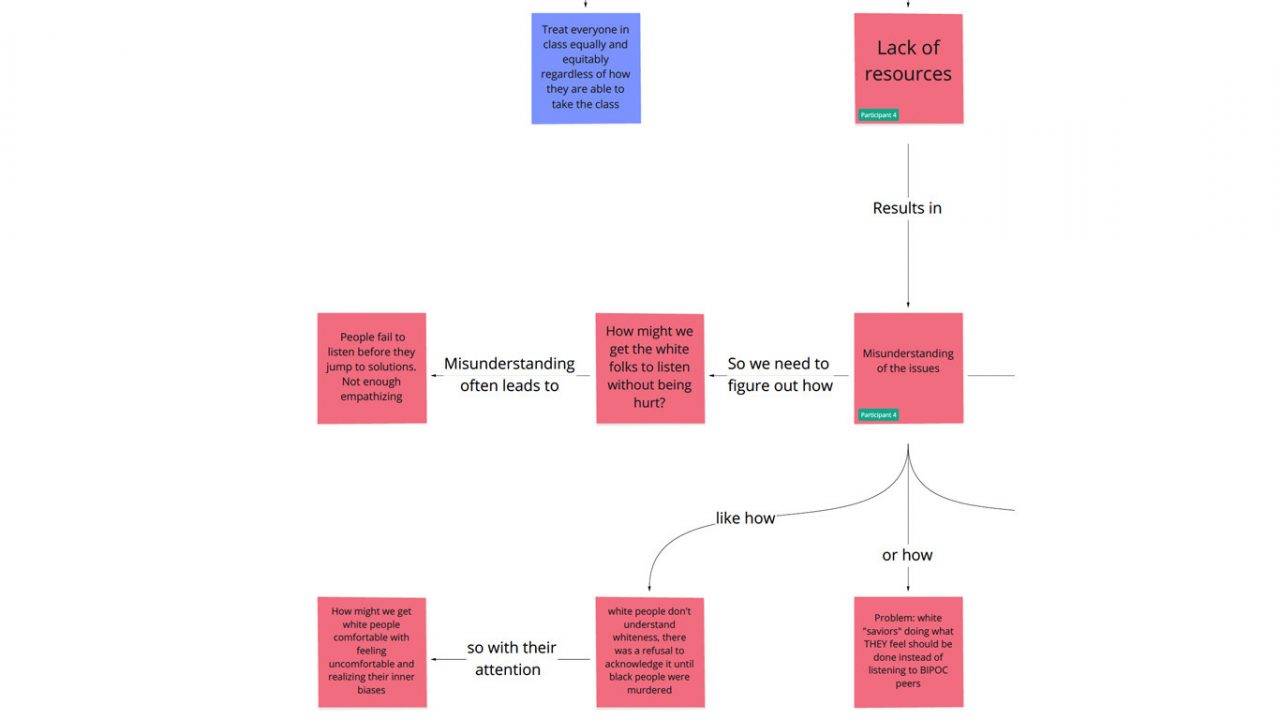
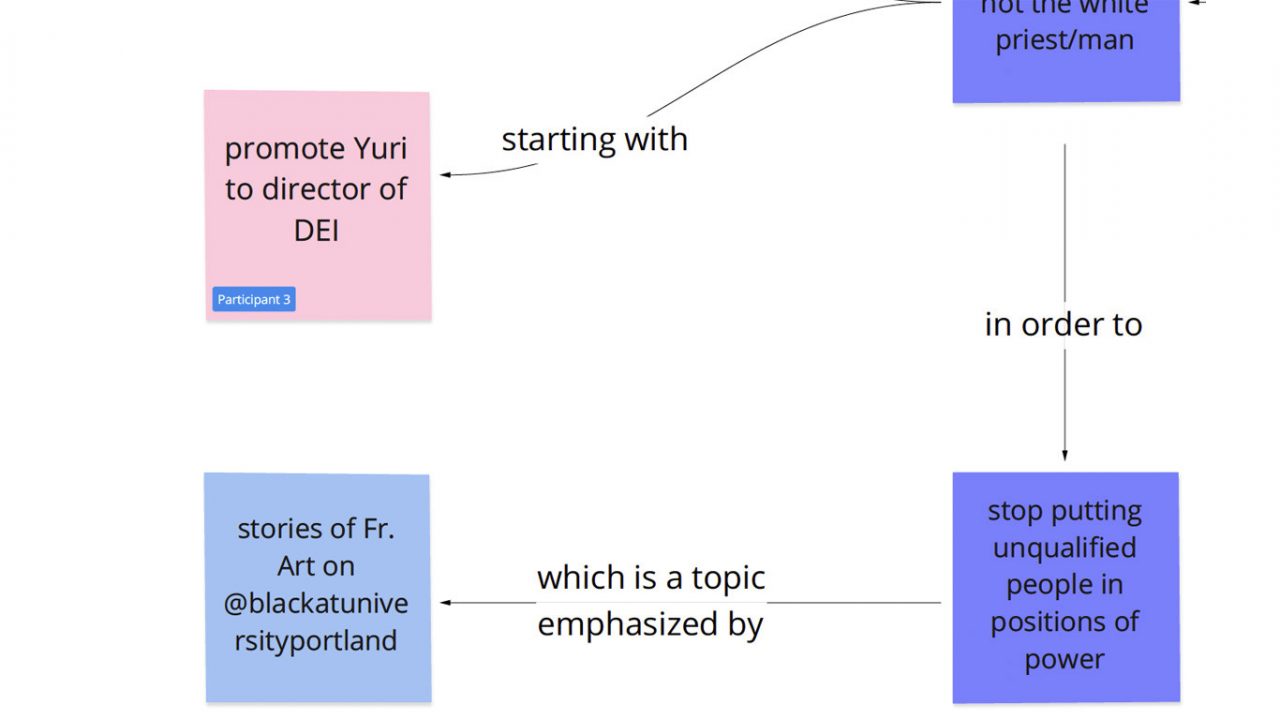
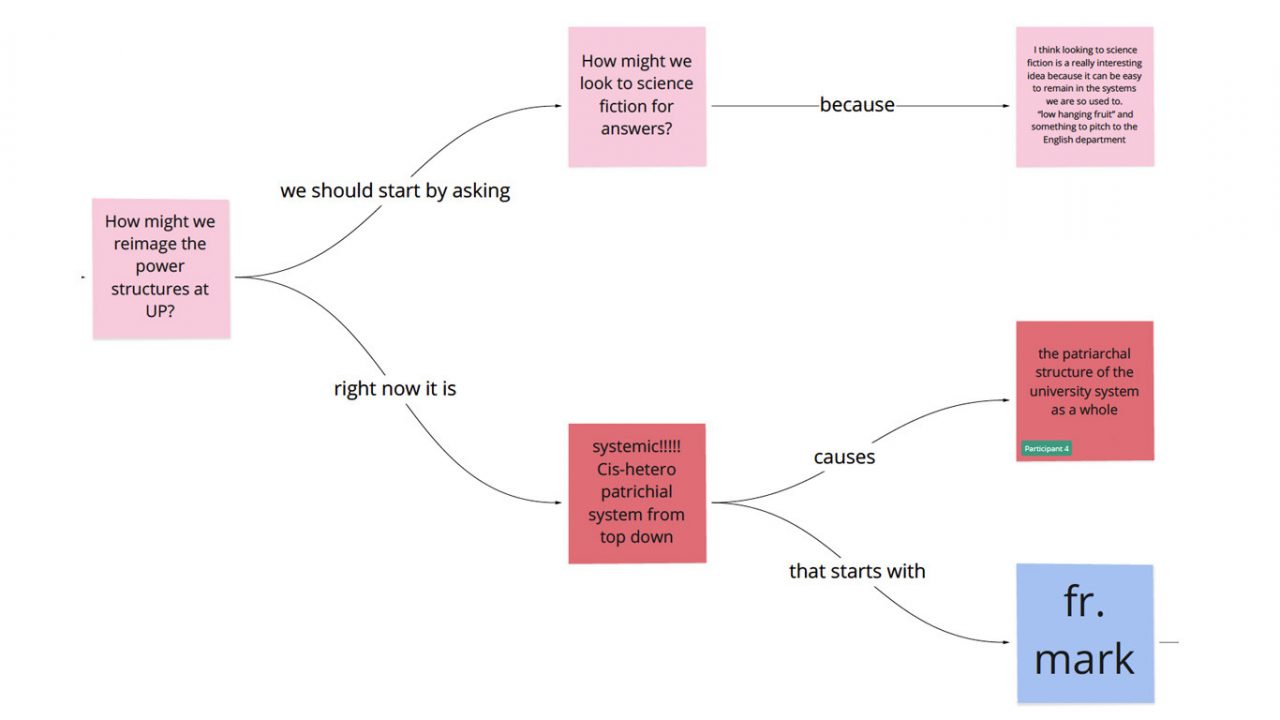
Closing Statement
We need to amplify the Diversity, Equity, Inclusion work that is already being done within various UP organizations because their previous efforts have been compartmentalized. With collaboration between organizations, the community will be able to make unified progress towards a socially just campus.
Students of the Innovation Minor, Cohort ’21
- Students of the Innovation Minor Cohort ’21:
- Mia Aguilar, Communication Studies / Sociology ’23
- Riley Dehmer, Mechanical Engineering ’22
- Elizabeth Diaz-Gunning, Civil Engineering ’22
- Ethan Figueredo, Computer Science ’22
- Julia Hanly, Nursing ’23
- Hannah Kelly, Theater ’23
- Raphaelle LeBlanc, Organizational Communication ’22
- Justin Manahan, Marketing ’22
- Audrey Sauter, Computer Science ’23
- Cooper Sloan, Mechanical Engineering ’22
- Salvador Orara, Innovation Professor of Practice | Director of Innovation, presided as Lead Researcher
